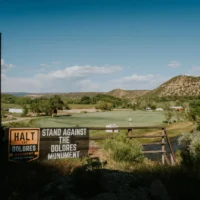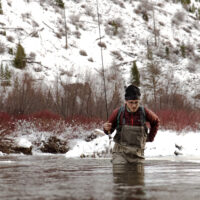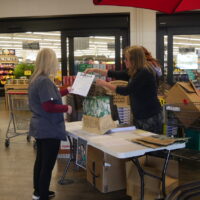Monte Vista had no place where veterans could access services and partake in outdoor activities. One local had a vision. Read more
Trails and Transformation
Farmers and outdoor enthusiasts partner to build trails for recreation and economic growth in the San Luis Valley.
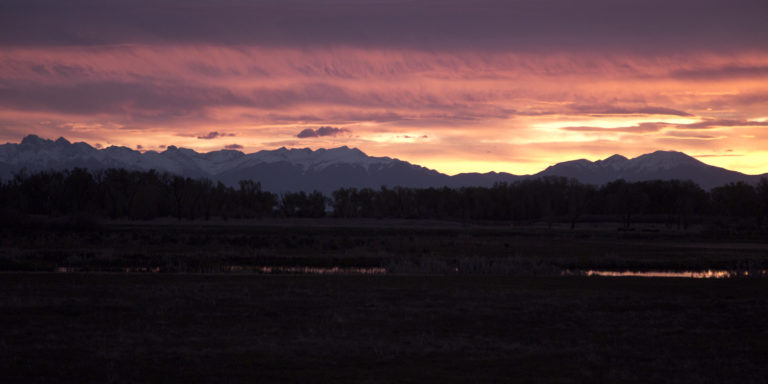
Something radical is happening in the San Luis Valley. It’s happening slowly, intentionally–so you have to look closely to see it. At the center is an urgent question: How does the Valley capitalize on a wealth of land and resources, but protect its stunning mountains and rivers from overuse? The answer demands the cooperation of unlikely collaborators.
The San Luis Valley is an 8,000-square-mile, high-desert basin. Averaging 7,600 feet above sea level, it’s considered the largest high alpine valley in the world. This ancient sea bed is now fertile farmland, fed by the headwaters of the Rio Grande. Despite an annual rainfall of less than seven inches, surface water surges with run-off from the San Juan and Sangre de Cristo mountain ranges, which rim the Valley’s bowl with craggy, snow-capped drama.
Although, these days the snowmelt isn’t enough to recharge aquifer levels to what they once were.
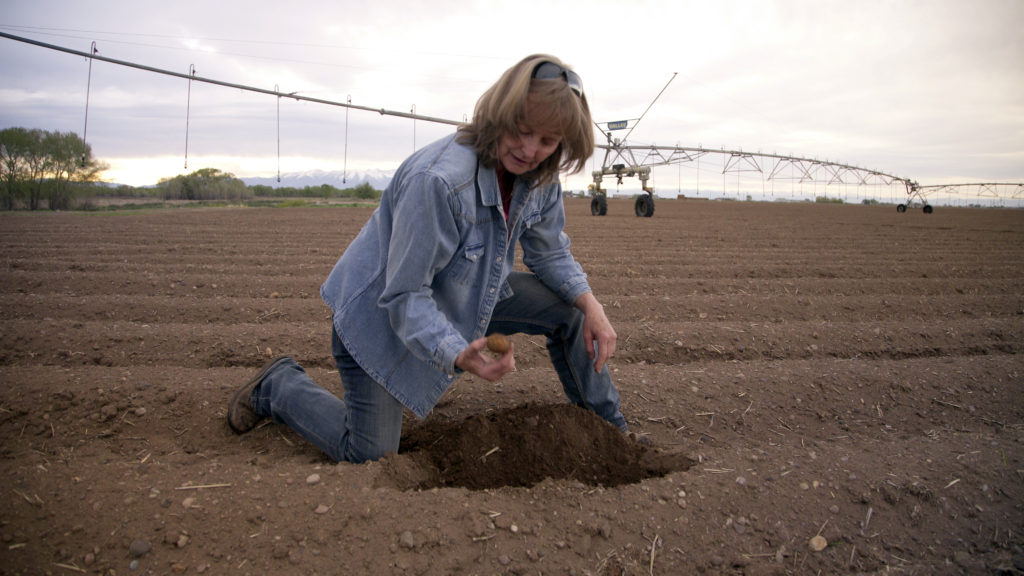
Karla Shriver, a fourth-generation farmer in Monte Vista, unearths a potato from her 1,000-acre farm.
Comprised of over 500,000 acres of public land, the Valley is home to the Great Sand Dunes National Park, the newly designated 90,000-acre Baca National Wildlife Refuge and Rio Grande National Forest. And yet, despite its wealth of natural resources, the six counties that make up the Valley are the poorest region of Colorado.
“That’s the thing about the Valley,” says Karla Shriver. “We’re asset rich, and cash poor.”
Shriver shoots a shotgun left-handed. “But I shoot a pistol with my right,” she laughs. A fourth-generation rancher raised on a commercial cattle farm in Eastern Colorado, she’s been growing 1,000 acres of potatoes and alfalfa outside Monte Vista for thirty years. The backs of her hands are speckled with sunspots. She has short fingernails with dirt in the cuticles, high cheekbones and a denim shirt with pearl buttons. She also has a great aim at sporting clays.
Legacy of Land Use
Shriver is just as much an ambassador as she is a cowgirl. She has served 12 years as a Great Outdoors Colorado board member and county commissioner, and stewards a 320-acre conservation easement in partnership with Ducks Unlimited, a national wetland conservation organization. In her time on the Great Outdoors Colorado board, she traveled to communities all over the state that were experiencing an economic transformation thanks to mountain biking, rafting, snowboarding, and skate parks. “So I thought, why can’t our valley do that too?” she says. “Agriculture is no longer the economic engine it once was. We’ve got to use the resources we have. But wisely.”
Shriver and a group of concerned Valley residents founded the San Luis Valley Great Outdoors (SLV GO), a LOR-supported nonprofit and partner.
“As a leader, she really sees both sides,” says Mick Daniel, SLV GO Executive Director. “She’s not in one camp or the other.”
The “two camps” Shriver straddles are—in one corner—commercial farming, which has sustained the Valley’s economy for centuries through agriculture and ranching—and in the other corner—outdoor recreation, touting the high-dollar, high-return of tourism. A long, complicated history has pitted recreationists, conservationists, and farmers against each other, Shriver explains. Years of water rights lawsuits, declining aquifer levels, and clashes between tourists and conservationists (particularly around the expansion of ski resorts) have made “land use” a controversy in need of delicate diplomacy.
The us-versus-them mentality is a false dichotomy, Shriver cautions. “We all love the land. We just use it in different ways.”
Six counties make up the San Luis Valley: Saguache, Mineral, Rio Grande, Alamosa, Conejos, Costilla. Click on the colored dots in the legend above to turn the map layers on and off. Zoom in to see US Forest Service and Bureau of Land Management lands.
So how do hikers, bikers, conservationists, and farmers find collaborative uses for the land they love? At SLV GO, Daniel says, “That’s what we’re looking for…a radical center.”
The center is a radical place indeed. All over the American West, towns are struggling to find what compromise looks like, with sustainability as the moving target.
“We don’t want to be the next Moab,” says Daniel.
“We don’t want to be the next Vail or Aspen,” Shriver says.
Meanwhile in Del Norte
Traveling north along the Rio Grande is the unassuming town of Del Norte. Quietly, over the last decade, the city has worked deliberately to increase livability and public land access by building miles of outdoor recreation trails and slowly reinvigorating the economy.
Back in 2010, Del Norte had little to no river and trail access for residents. Boaters and anglers had to cut through thick willows and reeds to get to the banks of the Rio Grande. In the surrounding high desert canyons, the labyrinth of ancient sand dunes and slick rock was in danger of fractured ecosystems and habitat loss as social trails from ATVs and bikers were blazed haphazardly, following old livestock and horse paths.
Today, the Del Norte Trails Coalition has completed 55 miles of purpose-built trail systems, the first of its kind in the Valley. The trail construction in Penitente Canyon is expanding thanks to the Conservation and Connection Initiative, a re-granting program in partnership with LOR.
Along the river, two organizations with vastly different missions are illustrating land use diplomacy in action. The Rio Grande Headwaters Restoration Project is working alongside the Del Norte Trails Coalition to build the Del Norte Riverfront Project. The master plan satisfies both the conservation mandate of the Headwaters Project—with restoration, revegetation, and improved trout habitat, as well as the recreation goals of the Trails Coalition—creating a boat ramp, whitewater play wave, and trail systems.
“Five years ago, I saw the first stroller,” says Marty Asplin, co-director of the Upper Rio Grande Economic Development. “I did a double take, ‘Oh my God, a family!’” Asplin has watched the unfolding transformation. “In the beginning, no one talked about Del Norte as a destination. But ‘best kept secret’ is not a business model.”
Once a bustling center of saloons and dance halls, Del Norte’s population has shrunk from 10,000 in the 1890s to 1,500 in 2017. However, as you drive through town these days you’ll see a new hospital, a new brewery and taproom, the restored historic Windsor Hotel and a newly refurbished drive-in theatre.
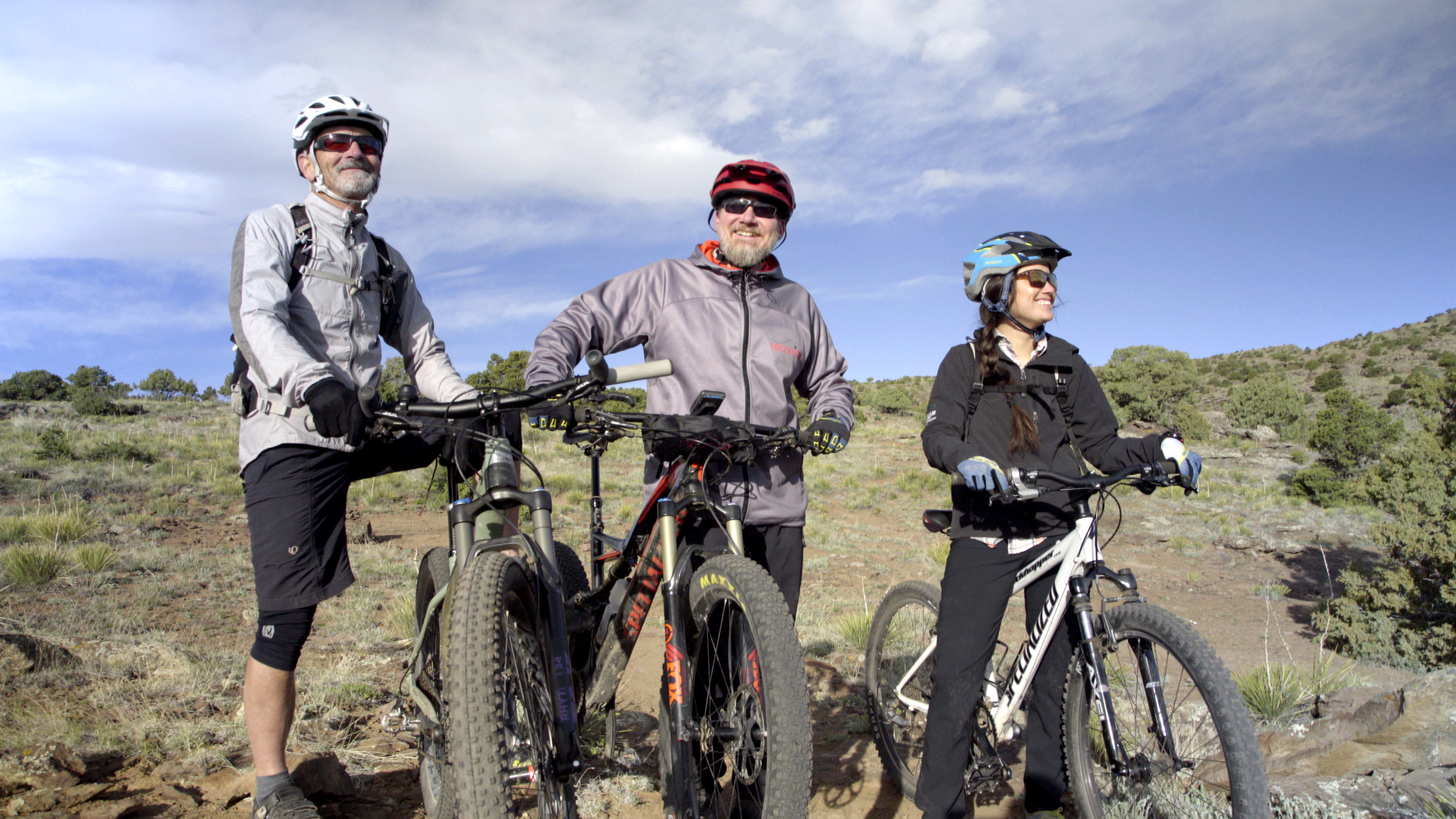
Gary Blakley (left), Mick Daniel, Executive Director of SLV GO, and Jessica Chacon (right) ride the Stone Quarry trail system outside of Del Norte.
To an outsider, Del Norte might still seem like a sleepy Valley town. But property values are rising steadily. Property is selling before it even hits the market, Asplin says, with prospective owners making cash offers on the spot. While economic growth is welcome, residents don’t want it to come at the expense of their own cost of living.
So, how do residents in these Valley towns prioritize local prosperity while growing the recreation economy?
“What if trails are the answer?” asks Daniel.
It’s an oversimplification, he admits, but it invites a thought experiment: What if trails get people outside more often. Those people become healthier, happier and more connected to their hometown. Maybe they have a great business idea, and they stay in the Valley instead of taking it to Denver.
Daniel shrugs, “It’s simple. But what if it works?”
Cutting into Crestone
“The San Luis Valley is in a unique position to be proactive, rather than reactive,” says Sally Weir, Regional Director of Volunteers for Outdoor Colorado. “These trails will help build stewards.” Today she’s in Crestone leading a crew of over 50 volunteers, breaking ground on a new trail system in the Baca National Wildlife Refuge.
Crestone sits at the foot of the Sangre de Cristos, a mountain range pushed up with dramatic tectonic violence, creating one of the most steeply ascending ranges in Colorado. The 14,300-foot Blanca Peak is covered in clouds as volunteers heft pickaxes and rake back stubborn grasses.
Because the surrounding mountains are so sheer and rugged, most trails are too aggressive for the average Crestone hiker to enjoy. With the Great Sand Dunes to the east, the Baca National Wildlife Refuge to the south, and the Rio Grande National Forest to the west, Crestone is surrounded on all sides by public land, which until recently was not publicly accessible to residents.
That’s changing thanks to the Eastern San Luis Valley Trails Coalition. In collaboration with LOR, Crestone Homeowners Association, and Saguache County, the Trails Coalition is creating a new master trail system, modeled in part after Del Norte. With the help of the Volunteers for Outdoor Colorado crew, the Baca trails will connect the city and neighboring Colorado College campus to the wildlife reserve.
“When the residents are involved in building the trails themselves, they’ll share an ethic and a foundation,” says Weir, “so that when tourists come in, the community holds them to their standards.”
This is important in Crestone, which has an especially idiosyncratic small-town lifestyle to preserve. It is home to 22 distinct spiritual communities, a 40,000-acre land grant housing development and many passive solar and off-the-grid homes hidden on the hillsides. At a downtown café named Elephant Cloud, an Air Force veteran orders a yerba mate with hemp milk. There are small shrines to Buddha and Ganesha near the café register, where an espresso and fistful of lavender are presented as offerings. Apart from the central downtown grid, all roads are unpaved. The history museum is a wood-sided bank building, a vestige of Crestone’s heyday as a gold mining boom town (population 2,000 in 1900). Its current population is 147.
“Trails are the tool for increasing economic growth but also preserving the very thing people come to see,” says Burt Wadman, the coordinator for the Eastern San Luis Trails Coalition. “But we have to protect ourselves from the impact. We have to implement gradually.”
Wadman’s enthusiasm for Crestone’s growth is fierce but tempered. He recognizes, “Recreation could be the next extractive resource.”
The Need for Stewards
In Alamosa, Jesse Marchildon’s dog, Olive, charges into a field. Blackbirds burst up from the grasses and disappear into a treetop in angry chatter. Marchildon is manager of the Rio Grande Farm Park, a 38-acre parcel of land outside downtown Alamosa. He’s 31 years old with long eyelashes and a calm, thoughtful cadence to his speech. His gauged earlobes are pierced by two big chunks of turquoise. Walking the rows of sapling fruit trees and seedling crops, there’s a soundscape of vibrating insects, clucking chickens, and the call and response of songbirds. Olive bounds back toward him, tail wagging.
“I think people experience a general malaise when they’re surrounded by a built environment all the time,” he says. “I definitely felt that when I was living in Denver and Boulder. You can’t see the sky, you’re surrounded by concrete all the time, it’s smoggy, noisy. You’re never in the wild.”
Marchildon works with Alamosa families to cultivate community gardens and commercial farming plots. “I think getting people back onto the soil is really important for both personal and mental health, as well as community health.”
With support from LOR, the Farm Park was able to purchase the river-side property in 2015 and leverage their program to receive a Conservation and Connection Initiative grant totaling more than $150,000 over four years. Marchildon has seen the Farm Park bring together some of the most disparate cross-sections of Alamosa residents: from fourth-generation Hispanic farmers, to curious millennials interested in regenerative agriculture, to enthusiastic elementary school students.
“It’s hard to believe, but many of these kids have never been in the water before,” says Bethany Howell, Executive Director of the Rio Grande Watershed Conservation and Education Initiative. She’s standing on the river bank at the Farm Park as students paddle around in kayaks on the rushing current, swollen with snowmelt. She’s the organizer of the annual Water Fest on the Rio, which brings children and families to the Rio Grande Farm Park to learn about aquatic habitats, agriculture, rivers, and recreation.
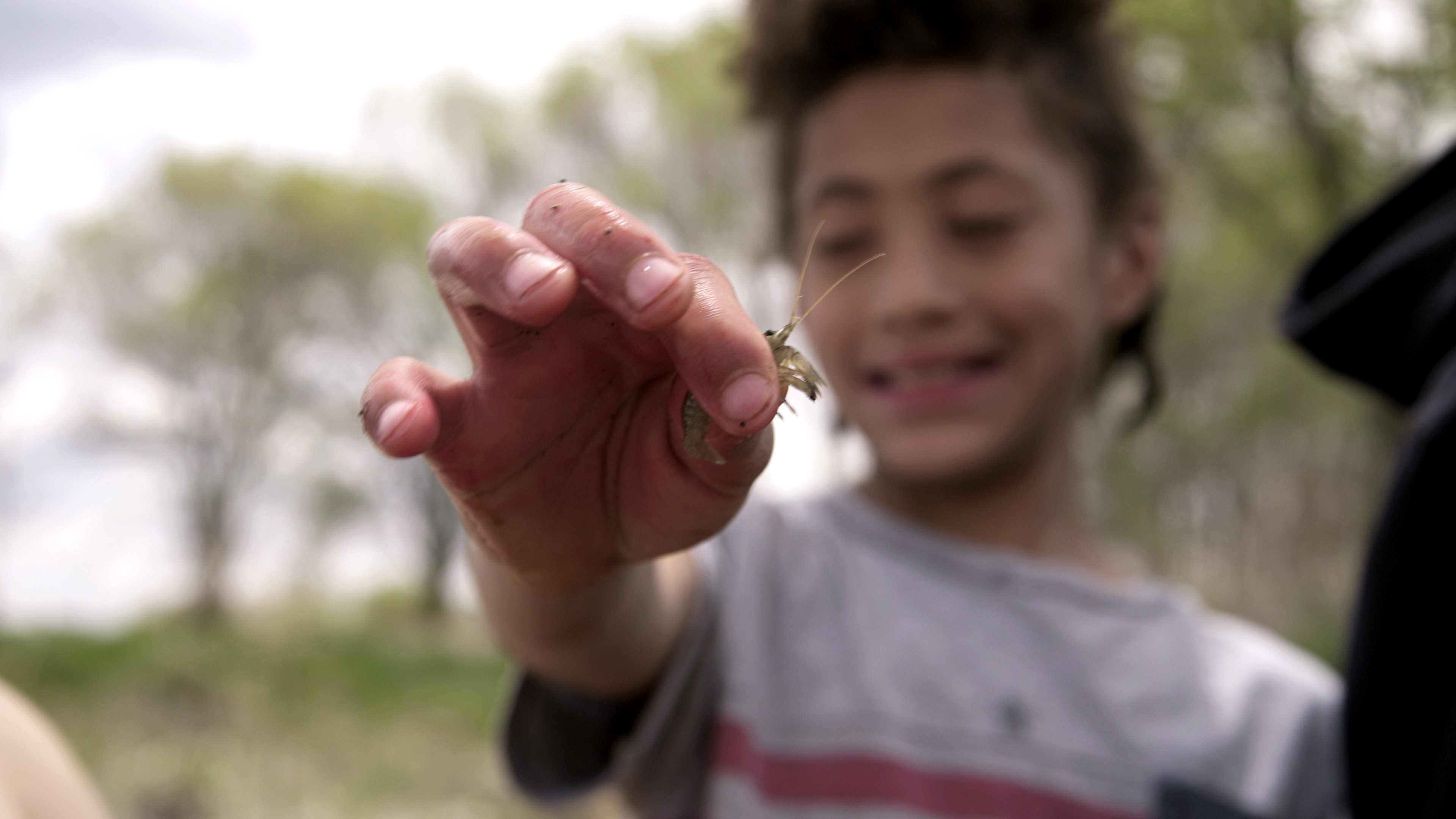
A student at Water Fest on the Rio shows off an aquatic organism.
“People believe rural kids are outside all the time. But, especially here in the Valley, we have a lot of barriers. If you live five miles from the river, how are you going to get there? There’s no transportation. No sidewalks. Maybe your family can’t spend the gas money.”
Howell says initiatives like the Farm Park are alleviating lack of access and helping the community fall back in love with their land. “Our kids just need to get in the water and play. Then, maybe, they’ll start to understand that we’re all part of this watershed. We want to show them it’s a community: animals, plants, people, we all have to share this.”
Sharing, after all, can cause major anxiety in the Valley.
Local Livability
“Tourism might seem like a cleaner source of income,” warns Howell, “but growing outdoor rec at the expense of agriculture and culture will hurt the community. Agriculture has been the economic engine for hundreds of years. We can’t just say, ‘Move over. It’s recreation’s turn.’”
There are plenty of cautionary tales from cities that charged full speed into the outdoor recreation economy. Cities like Moab, Utah and Vail, Colorado experienced rapid growth during the 2010s. The population has jumped 28 percent since 2000 in Eagle County, CO where the alpine resort of Vail is located, drawing in major tourism dollars and tax revenues, but creating record-high cost of living and a housing crisis the city is still struggling to solve.
Without thoughtful consideration of the San Luis Valley’s generational poverty and economic instability, the outdoor recreation infrastructure won’t actually benefit the town residents.
“You can’t build a pump track if all the kids are on flimsy bikes,” Mick Daniel of SLV GO says. Pump tracks are a series of dirt ramps for mountain bikes and BMX. “A $50 bike is all our families can afford. So everyone’s going to come on the first day, break their bike, and never come back. You’ve got to build infrastructure that people can use, not just cater to what’s hip for tourism.”
The Radical Center
Tourism is far from taking over the Valley’s economy. In 2013, potato farming was the top-grossing economic output, generating over $179 million. Nearly one-third of the Valley’s income comes from agriculture production and processing, accounting for 26.5 percent of all jobs.
However, given the Valley’s struggle with declining aquifers and soil health, farmers are often portrayed as outdoor recreation’s adversary, or the environmentalist’s bad guy, says farmer Karla Shriver. “I’m not saying there hasn’t been abuse,” she says. “We’ve got to balance feeding the world and making a profit. Margins are so thin.”
Marchildon, at the Farm Park, has encountered the “bad guy” trope more than once. “Instead of finger-pointing, you’ve got to understand that the people who are most dug in are not evil, they’re the most entrapped,” he says. With enormous equipment costs and erratically fluctuating markets, commercial farming in the U.S. has double the suicide rate of other trades. “We’ve got to critique the system, not alienate or blame the individuals,” he says.
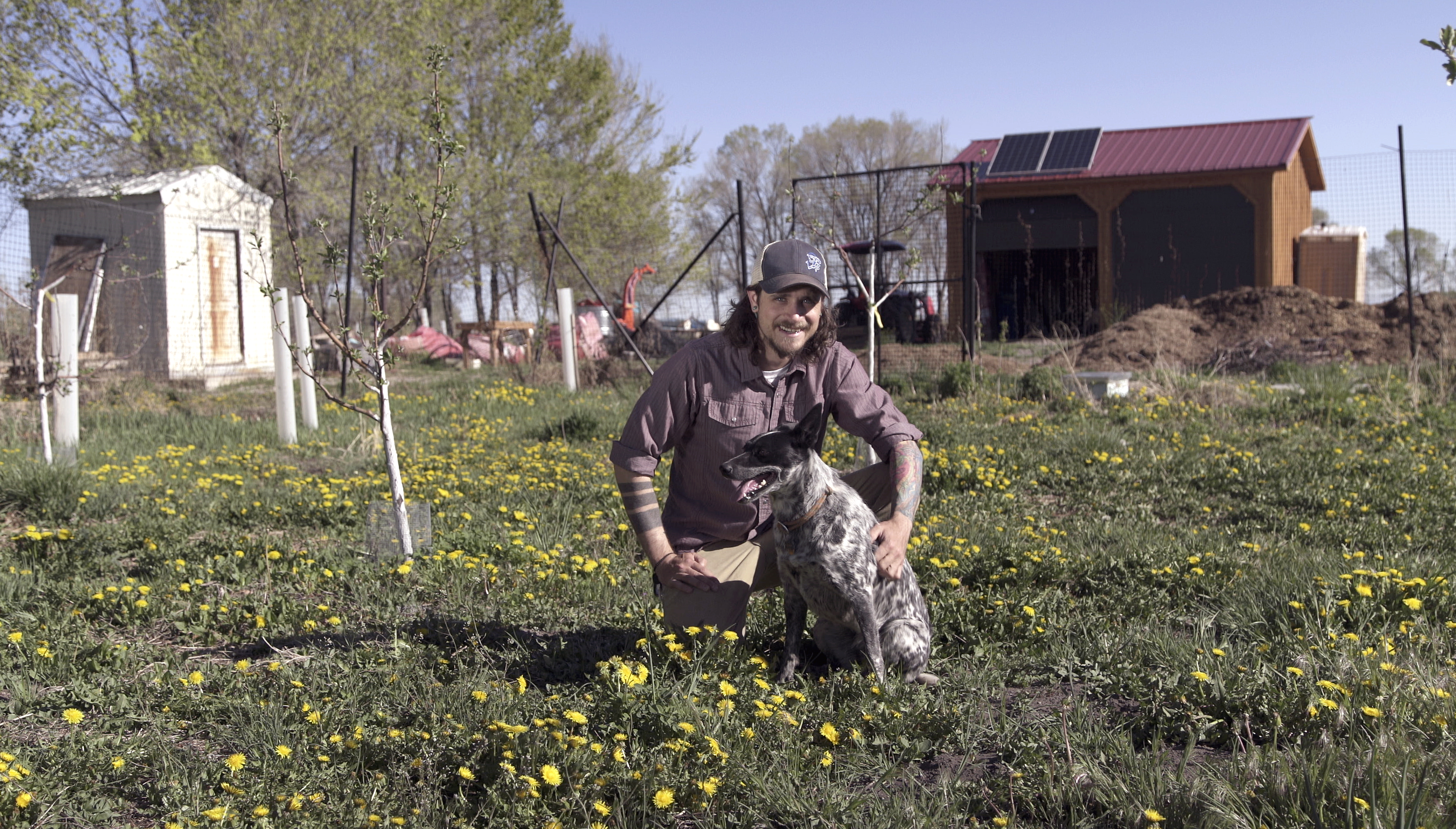
Jesse Marchildon, Farm Park Manager, with his dog Olive at the Rio Grande Farm Park in Alamosa.
And that’s what makes initiatives like the Rio Grande Farm Park, Del Norte Riverfront Project, Rio Grande Watershed Conservation and Education Initiative, and SLV GO so successful: gradual, individual change.
Joggers in Alamosa stop at the Farm Park market to buy local produce. Rural high school students in Monte Vista are choosing degrees in conservation and soil science. Ranchers from Del Norte are spending family weekends hiking new trails. Valley residents are finding the radical center where “land use” is a shared value, rather than a controversy.
“What’s amazing about this place is how the Valley collaborates: water community, outdoor rec community, we have to work together,” says Shriver.
Shriver, Daniel and Marchildon’s work isn’t just cutting trail or planting potatoes—it’s finding the places where all these interests interlock. Ultimately, dissolving dichotomies and prioritizing the health of local communities is what will save the Valley’s small-town economies. Because with a changing climate and a dropping water table, “What other option is there?” Shriver asks.
“The transformation we’re seeing in the Valley is about recognizing our history,” says Marchildon, “and adapting it to where we need to go…together.”
By Ilana Newman, The Daily Yonder Read more
Not every Wyomingite is a natural hunter or fisherman. That's where a pilot program from the Wyoming Wildlife Foundation comes in. Read more
When Laura Herrick realized how many plastic bags were being used in Cortez, she devised a plan to reduce the number by at least half, with a little help from LOR. Read more
Share an Idea
If you have an idea for improving quality of life in Cortez or Monte Vista, Colorado; Lander, Wyoming; Libby, Montana; Questa or Taos, New Mexico; or Weiser, Idaho, use this form to start a conversation with us.

